|
McCord Radiator & Mfg., Company During World War Two
Detroit, MI
1906-1944
9-29-1944 - Mid 1985 as the McCord Corporation
Mid 1985 - Unknown date as a subsidiary of Ex-Cell-O Corporation
This page added 6-6-2023.
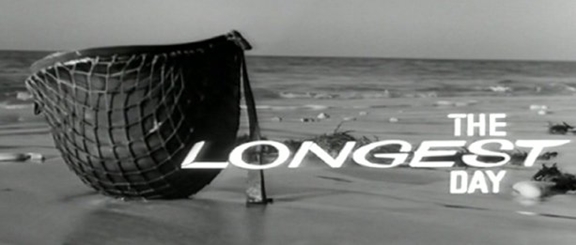
The opening scene from the 1962 movie "The
Longest Day" featured the ubiquitous American M1 helmet. The M1
helmet and the American servicemen and servicewomen of World War Two
were most identifiable as Americans when wearing this helmet. Its
distinct design and shape identified Americans in every combat
theater during World War Two.
Most likely, this M1 helmet was produced by
the McCord Radiator and Manufacturing Company of Detroit, MI. The
company produced 89% of all M1 helmets during World War Two.
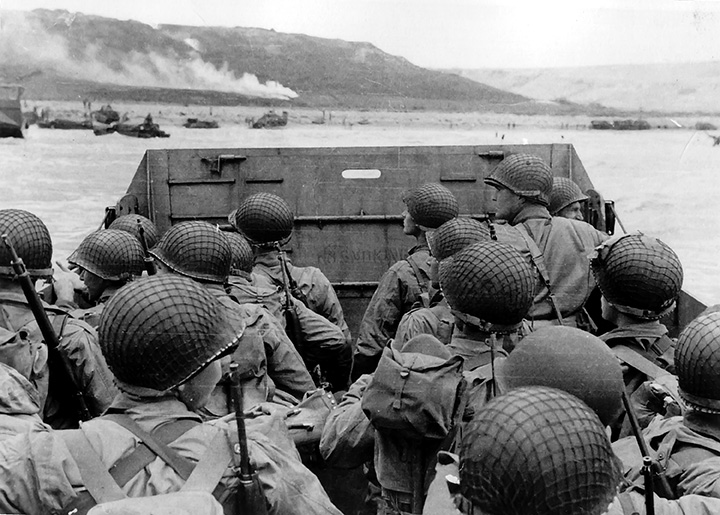
This view of an LCVP making its way ashore at Normandy only shows the
back of the soldiers heads and shoulders. However, the distinctive
M1 helmet immediately identifies them as American soldiers.
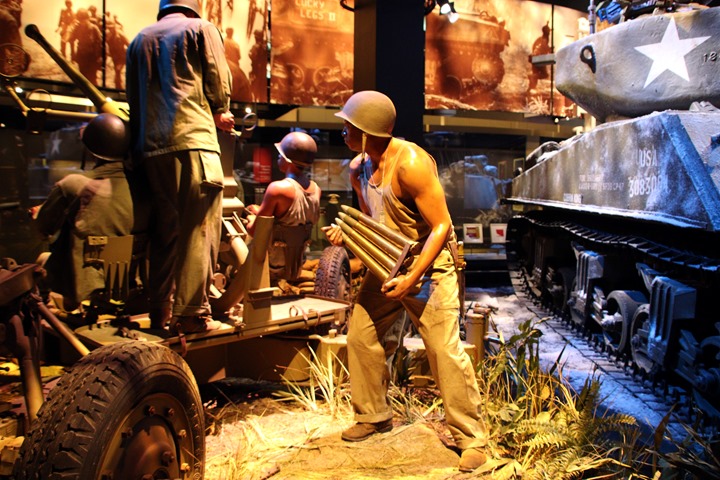
Members of this 40mm Bofors anti-aircraft
gun crew in this full scale diorama of loading the weapon at Dreger Airfield
in northeast New Guinea during World War Two can be identified as
Americans by their M1 helmets. Several of the crew members are not
in full uniform due to the heat. However, they are all wearing
their M1 helmets.
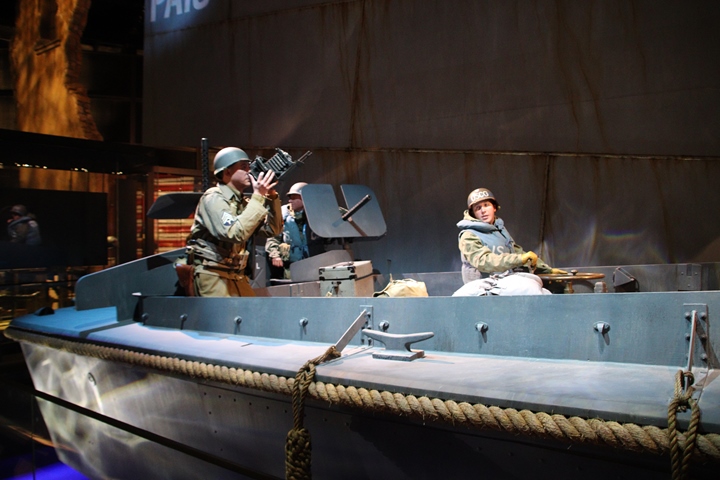
U.S. Navy and U.S. Coastguardsmen also wore
the M1 helmet. Two of the four-man crew of this LCVP can be seen
wearing the M1 helmet. Most likely, these are members of the U.S.
Coast Guard, as they were the ones that manned most of the small landing
craft during World War Two.
When was the M1 helmet more than a just a
helmet? This was whenever the wearer was not in a combat
situation. The steel pot, as it was more well known to its
wearers, had many other uses.
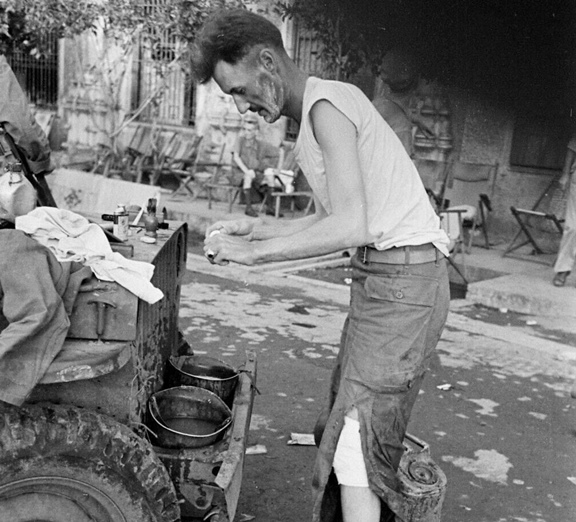
Shaving was one of the most popular uses of the M1 steel helmet.
In this particular example two steel pots have been set up. One
could be for clean water and the other for soapy water. Or one
could be for shaving and the other for washing.
Cooking was another popular use for the steel
pot. My father boiled potatoes in his steel pot while serving with the 88th
Division in Italy during World War Two. My father and his buddies
came across a a group of unharvested potatoes. They boiled them
in their pots to get something to eat. Like many other infantrymen
and other soldiers on the front lines, my father was not getting enough
to eat. In spite of all of the motorized transportation for which American
forces were known during World War Two, soldiers and Marines on the
front lines were hungry much of the time. The food was not making
it to front line positions that were difficult to reach from the supply areas and
mess tents.
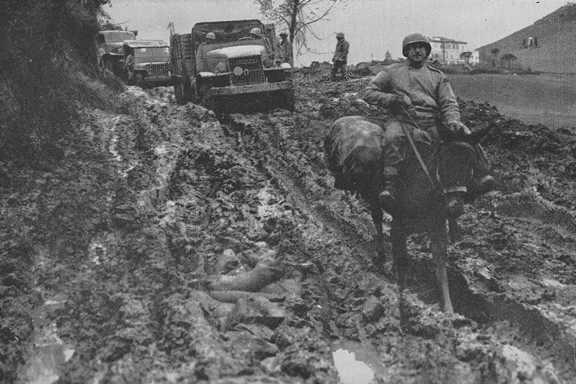
This image from the 88th Division area of operations shows a mule
sharing the muddy road with two GMC CCKWs and a jeep. There were
many places in the mountains that a motorized vehicle could not go, but
a mule could.
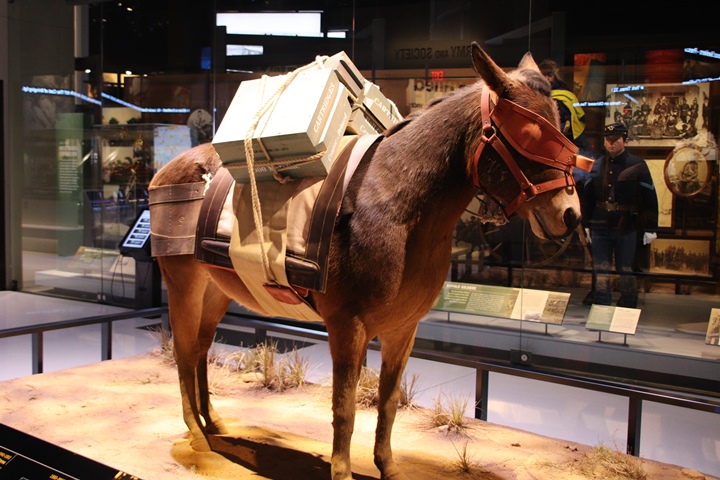
The pack mule was more widely utilized than
in just the Italian Campaign of World War Two. Two thousand were
used in Tunisia to delivere supplies to troops located on the remote
front lines where even a jeep couldn't go. They were also
used in New Guinea, China, and Burma. In the last year of World
War Two, the U.S. Army Quartermaster Corps purchased 20,000 mules. For
my father in Italy, a pack mule like this may have kept him and his
buddies from starving in the Italian mountains. Author's photo
from the National Museum of the United States Army at Fort Belvoir, VA.
But I have digressed. Now back to the
McCord Radiator Company and how it helped to win World War Two.
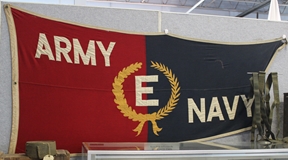 | |
The McCord Radiator & Mfg. Company won the
Navy "E" award one time, and the award was converted to the
Army-Navy "E" award when it was awarded the second time. In total,
the McCord Radiator & Mfg. Company won the award six times
during World War Two.
The company's first award was the Navy "E"
Award on March 27, 1942.
The company's second award was the Army-Navy "E" Award on August 30,
1942.
The company's third award was the Army-Navy "E" Award on February 26,
1943.
The company's fourth award was the Army-Navy "E" Award on October 30,
1943.
The date of the fifth award is unknown but estimated to have been in
April or May 1944.
The date of the sixth award is unknown but estimated to have been in late
1944 or early 1945.
There were 1,000 employees who attended the
first award ceremony on March 27, 1942. It is of interest that the
first award the company won was the Navy "E" flag. While McCord is
best known for being the largest producer of steel helmets ordered by
the U.S. Army, it was the development and production of machine gun
ammunition link machines for the U.S. Navy that generated its first
award. This McCord World War Two product is not as well-known as
its helmet production, but for the U.S. Navy, it was a key product.
The company added 500 employees in 1942 as
there were 1,500 employees that attended the second award ceremony on
August 30, 1942.
McCord Radiator & Mfg. Company World War
Two Products: The company is most well known for being the
primary supplier of M1 helmets for the U.S. military during World War
Two. While it produced 90% of the M1 helmets for the war effort,
Table 1 shows that helmets were only 59% of the major contracts the
company was awarded during the war.
Of interest in the major contracts is that
according to Table 1, the U.S. Navy did not issue any contracts to the
company over $50,000 until January 1942. Yet on March 27, 1942,
the U.S. Navy awarded the company an "E" Award for "production
achievements on Navy ordnance material." Most of the Navy's
contracts with McCord Radiator were for machinery, most of it for
loading machines. It appears that McCord had several contracts
less than $50,000 for this of type equipment and was doing an excellent job
in getting it to the Navy on time and in the quantities required.
Table 1 - McCord Radiator
Company's Major World War Two Contracts
The information below
comes from the "Alphabetical Listing of Major War Supply
Contracts, June 1940 through September 1945." This was
published by the Civilian Production Administration, Industrial
Statistics Division. Table added 4-2-2022. |
|
Product - Customer |
Contract Amount |
Contract Awarded
|
Completion
Date |
| Helmet Body
Assemblies - Army Ordnance |
$1,860,000 |
11-1940 |
3-1942 |
| Helmet
Accessories - Army Ordnance |
$1,822,000 |
6-1941 |
4-1942 |
| Helmets -
Army Ordnance |
$1,578,000 |
11-1941 |
8-1942 |
| Helmet
Accessories - Army Ordnance |
$101,000 |
11-1941 |
4-1942 |
| Liners
Helmets - Army Quartermaster Corps |
$465,000 |
12-1941 |
4-1942 |
| Machinery
Loading - Navy |
$512,000 |
1-1942 |
7-1942 |
| Helmets -
Army Ordnance |
$68,000 |
1-1942 |
9-1942 |
| Helmets -
Army Ordnance |
$615,000 |
1-1942 |
11-1942 |
| Liners
Helmets - Army Quartermaster Corps |
$1,450,000 |
3-1942 |
8-1942 |
| Liners
Helmets - Army Quartermaster Corps |
$69,000 |
3-1942 |
5-1942 |
|
Machines - Navy |
$170,000 |
3-1942 |
7-1943 |
| Helmets -
Army Ordnance |
$1,753,000 |
5-1942 |
12-1942 |
|
Ordnance Material - Navy
Ordnance |
$5,209,000 |
6-1942 |
3-1943 |
| Helmets Steel -
Army Quartermaster Corps |
$89,000 |
6-1942 |
7-1942 |
| Helmets -
Army Quartermaster Corps |
$89,000 |
6-1942 |
8-1942 |
| Liners Fibre
- Army Quartermaster Corps |
$1,495,000 |
7-1942 |
9-1942 |
| Helmets -
Army Ordnance |
$444,000 |
8-1942 |
3-1943 |
|
Liners Helmet - Army
Quartermaster Corps |
$1,080,000 |
8-1942 |
11-1942 |
|
Machines Link Loading - Army
Ordnance |
$205,000 |
8-1942 |
4-1943 |
|
Machines - Army Ordnance |
$234,000 |
9-1942 |
121943 |
|
Helmets - Army Quartermaster
Corps |
$4,740,000 |
1-1943 |
9-1943 |
| Helmets -
Navy Ordnance |
$102,000 |
1-1943 |
2-1943 |
|
Machinery Industrial - Navy |
$85,000 |
2-1943 |
7-1943 |
| Helmets -
Army Ordnance |
$13,940,000 |
5-1943 |
2-1946 |
|
Armor Plates - Army Ordnance |
$3,908,000 |
8-1943 |
11-1945 |
| Target Rocket
Motors - Navy Ordnance |
$316,000 |
8-1943 |
1-1944 |
| Link Belting
Machines - Navy Ordnance |
$89,000 |
8-1943 |
12-1943 |
| Helmets -
Navy Ordnance |
$151,000 |
8-1943 |
11-1943 |
| Link Ejection
Chutes - Navy Ordnance |
$85,000 |
10-1943 |
2-1945 |
| Aviators
Steel Helmets - Army Ordnance |
$921,000 |
12-1943 |
2-1945 |
| Rocket Motors
- Navy Ordnance |
$740,000 |
1-1944 |
7-1944 |
| Helmets -
Navy Ordnance |
$64,000 |
2-1944 |
4-1944 |
| Navy Helmets
Mk2- Navy Ordnance |
$128,000 |
3-1944 |
8-1944 |
| Rocket Motors
- Navy Ordnance |
$1,120,000 |
6-1944 |
7-1945 |
| Rocket Motors
Mk9 - Navy Ordnance |
$1,059,000 |
7-1944 |
6-1945 |
| Helmets -
Navy Ordnance |
$370,000 |
7-1944 |
7-1945 |
| Rocket
Launcher Pts - Army Ordnance |
$132,000 |
8-1944 |
11-1944 |
| Radiators
- USAAF |
$988,000 |
10-1944 |
11-1945 |
| Flyers
Helmets M5 - Army Ordnance |
$637,000 |
2-1945 |
10-1945 |
| Rocket Motors
Mk2 - Navy Ordnance |
$280,000 |
3-1945 |
11-1945 |
| Lubricators -
Treasury Dept |
$152,000 |
5-1945 |
10-1945 |
| Armor Vest
Plates - Army Ordnance |
$350,000 |
5-1945 |
9-1945 |
| Total |
$49,671,000 |
|
|
|
Table 2 - McCord Radiator
Company's Major Product Groups |
|
Product |
Value
|
Percentage |
Number of
Contracts |
|
Helmets - Army and Navy |
$29,472,000 |
59% |
19 |
|
Link Loading Machines - Army and
Navy |
$6,504,000 |
13% |
7 |
|
Helmet Liners -Army |
$4,559,000 |
10% |
6 |
|
Armor Plate and Armor Vest
Plates - Army |
$4,258,000 |
8.6% |
2 |
|
Various Rocket Motors - Navy |
$3,515,000 |
7% |
5 |
|
Radiators - USAAF |
$988,000 |
2% |
1 |
|
Lubricators - Treasury Dept |
$152,000 |
0.3% |
1 |
|
Rocket Launcher Pts - Army
Ordnance |
$132,000 |
0.36% |
1 |
|
Link Ejection Chutes - Navy |
$85,000 |
0.17% |
1 |
| Total |
$49,671,000 |
100% |
43 |
An April 1943 newspaper
advertisement by McCord Radiator listed the following products it
was producing for the war effort:
-
Helmets for Army, Navy,
Civilian Defense, and some Allies.
-
Large Linking Machines of Intricate Design, Smaller Field Machines, and
Hand Linkers.
-
Projectiles for High Explosives.
-
Flame Traps for Marine and Aviation engines.
The company also produced spark plug gaskets for the jeep.
World War Two Steel
Helmets:
The next four photos were taken at the
Michigan Military Technical & Historical Society in Eastpointe, MI.
Among its many excellent displays, this museum has a display on the
Michigan companies that made the World War Two M1 steel helmet and
plastic helmet liner. A trip to the Historical Society got me
interested in the McCord Radiator and Mfg. Company and its contributions
to the winning for World War Two.
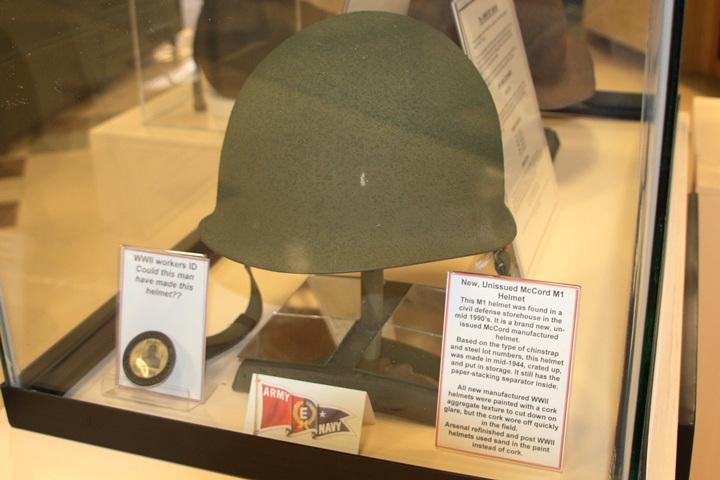
This 1944 era McCord-built M1 helmet was
found in the 1990's in a civil defense warehouse. It is a brand
new and unused helmet. Author's photo.
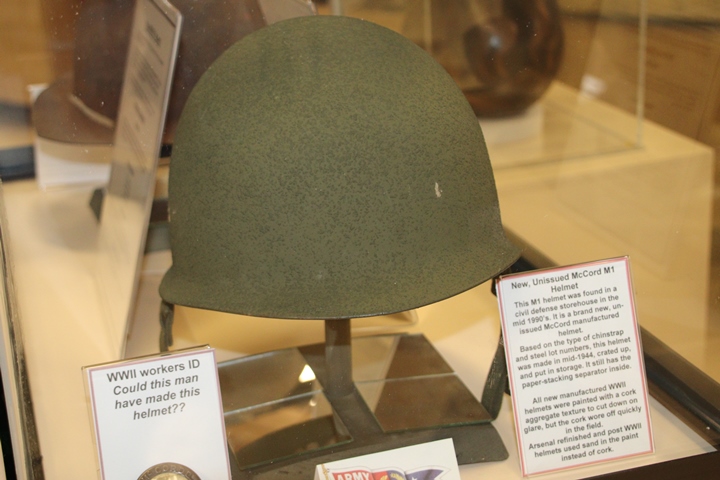
Author's photo.
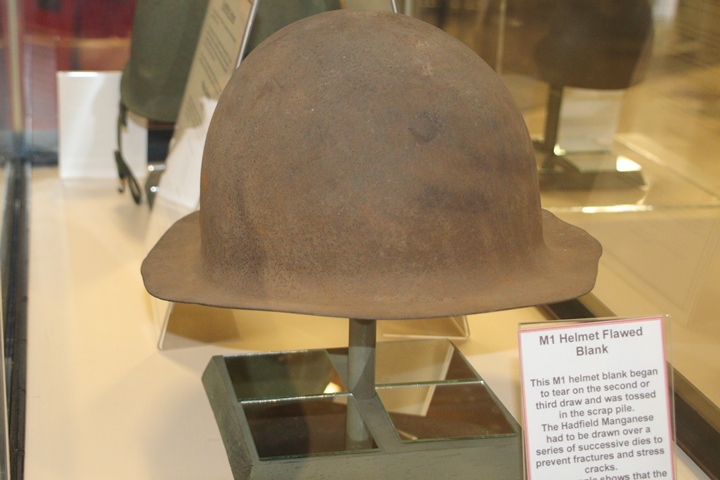
It took multiple strikes with progressive
dies to produce the final steel helmet. Author's photo.
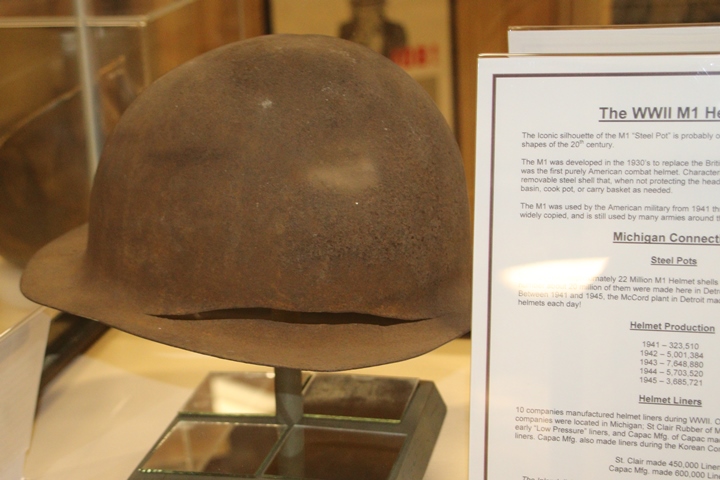
Sometimes the material tore during the
process. Author's photo.
|
Table 3 - McCord Radiator
Company's 1945 Scheduled M1 Helmet Production |
|
Month/Quarter |
Scheduled Amount |
Quarterly Accumulative
Totals |
|
First Quarter |
919,480 |
919,480 |
|
April |
308,000 |
|
|
May |
400,000 |
|
|
June |
400,000 |
2,027,480 |
|
July |
380,000 |
|
|
August |
300,000 |
2,707,480 - End of War |
|
September |
250,000 |
2,957,480 |
|
October |
250,000 |
|
|
November |
225,000 |
|
|
December |
90,000 |
3,522,480 |
|
Total |
3,522,000 |
3,522,480 |
Table 3 shows the maximum scheduled production
for 1945 was in
the months of May and June. Assuming the company was on a seven
day production schedule in May 1945, it was scheduled to produce 12,903
M1 helmets per day. If it had cut back to a five day a week
production schedule, it would have produced 17,391 per day.
Production would have ended in the middle of
August 1945 with the cessation of hostilities with Japan.
Production for 1945 would have been approximately 2,707,000 units.
|
Table 4 - World War Two M1
Helmet Production by Year |
| Year |
Quantity |
| 1941 |
323,510 |
| 1942 |
5,001,384 |
| 1943 |
7,648,880 |
| 1944 |
5,703,520 |
| 1945 |
3,685,721 |
| Total |
22,363,015 |
Table 4 shows the production of the
M1 helmet during World War Two. McCord Radiator was the
exclusive supplier of M1 helmets during 1941 and 1942. The
first 5,324,894 M1 helmets were produced by the McCord Radiator &
Mfg. Company.
Table 5 - World War Two M1
Helmet Production by Company
The amounts are rough estimates of production for each
company. The Percentages are based on the Estimated
Total of 22,060,000. |
|
Company |
Amount |
Percentage |
|
McCord Radiator |
20,000,000 |
90.7% |
|
Schlueter Manufacturing Company |
2,000,000 |
9.07% |
|
Parrish-Reading |
60,000 |
0.27% |
|
Estimated Total |
22,060,000 |
~100% |
|
Actual Total |
22,363,015 |
|
Table 5 shows estimated production of
M1 helmets by the three companies that produced them during World
War Two. The U.S. Army began accepting M1 helmets from McCord
Radiator in February 1942. The Schlueter Manufacturing Company
began the production of helmets in January 1943, and Parrish-Reading
began production in June 1945. It is a mystery why Army
Ordnance brought on Parrish-Reading so late in the war.
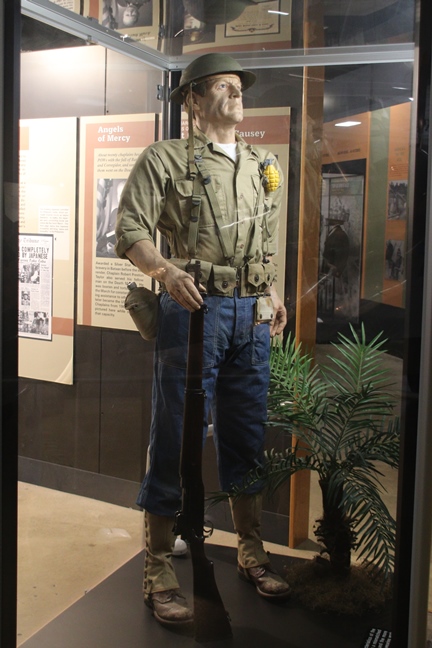
Earlier I stated that the American soldier
during World War Two could be identified by his M1 helmet. This is
not entirely correct. Troops in overseas locations at the start of
World War Two were still equipped with the M1917 helmet. This was
based on the British helmet of World War One and also used by the
British Commonwealth soldiers during World War Two. This mannequin
on display at the National Museum of the United States Air Force in
Riverside, OH depicts a former airman who was turned into infantryman in
the Philippines. The soldiers in the Philippines called themselves
"The Battling Bastards of Bataan." Many of those that weren't
killed in combat died in the Bataan Death March or in POW camps during
the war. Author's photo.
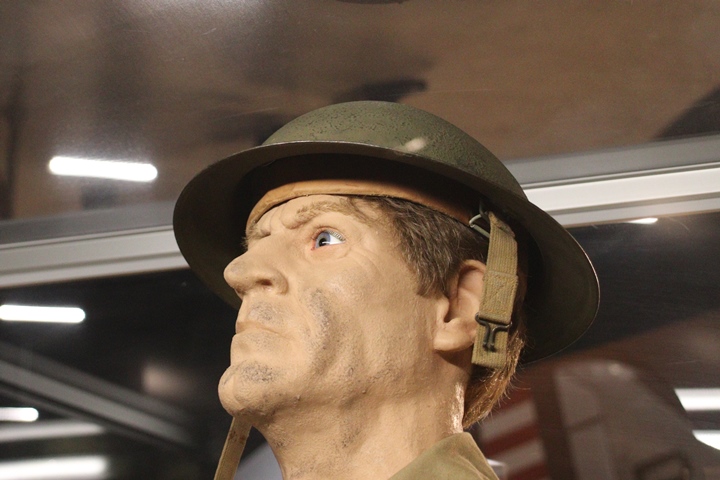
Unlike the M1 helmet of World War Two, there
was no helmet liner and the suspension was attached to the inside of the
steel helmet. U.S. Marines at the Battle of Midway in June 1942
were also equipped with the Model M1917 helmet. However, when the
Marine First Division landed at Guadalcanal August 7, 1942, its Marines
were equipped with the M1 Helmet. From that time forward, American
servicemen and women were equipped with the M1 helmet. McCord
Radiator was not involved with the manufacture of the M1917 helmet.
Author's photo.
|
Table 6 - World War Two Helmet Types |
|
Type |
User |
Application |
McCord Production |
Comments |
|
M1 |
All services |
Ground Combat |
20,000,000 |
|
|
M2 |
U.S. Army |
Paratroopers |
118,000 to 392,000 |
These are part of the M1 20,000,000 production. They
were special versions for the paratroopers. |
|
M3 |
USAAF |
Bomber Air Crews |
210,000 |
1942-1944 Issued to ETO bomber crews starting in
December 1943 |
|
M4A2 |
USAAF |
Bomber Air Crews |
Not a McCord Product. 80,000 were produced by other
companies. |
Introduced to bomber crews starting in June 1944. This
was a 3-piece steel helmet wrapped in fabric and leather for
warmth. |
|
M5 |
USAAF |
Bomber Air Crews |
Unknown |
Introduced in January 1945. |
|
Mk 2 |
U.S. Navy |
Navy Talker Helmet |
400,000 |
1942-1945 |
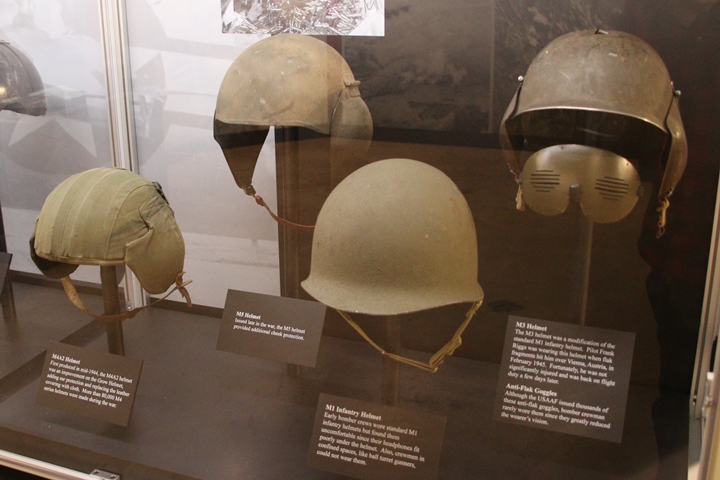
There were several variations of the M1
helmet during World War Two. Two of them are shown here in this
display at the National Museum of the United States Air Force.
This display shows several helmets that were produced for bomber air
crew head protection during World War Two. From left to right
there is the M2A2, the M5, the M1, and the M3 helmets. Author's
photo.
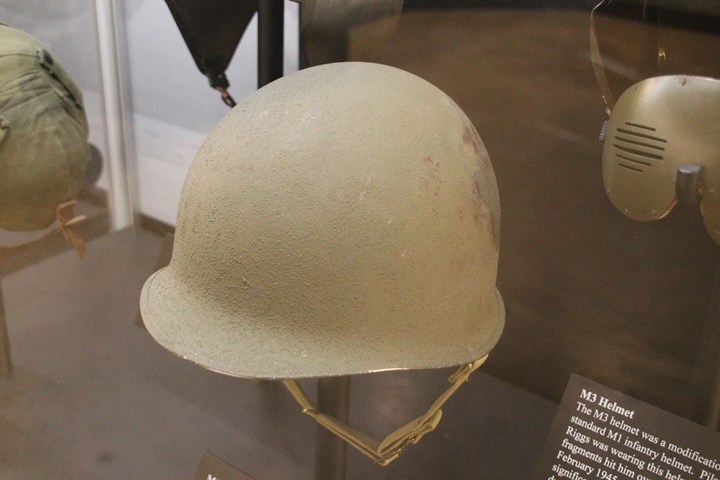
The standard M1 helmet was the first type
worn by bomber crews. However, this was not optimal as it did not
fit properly over the crewmen's headphones. Also, there was not
enough room in the ball turret for it to be worn by the gunner in that
position. However, it was what was available and expedient.
Author's photo.
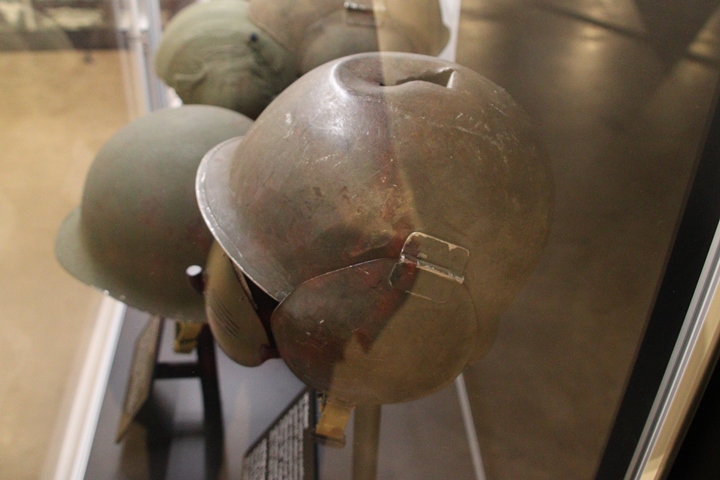
McCord made 210,000 of these between 1942 and 1944. It had its
own built-in suspension system and did not need a helmet liner. It
also had an exterior flock coating to keep the airman's skin from
sticking to the helmet at the freezing temperatures to which they were
subjected. This example in the display at the museum was hit by
flak. The wearer survived the attack. Author's
photo.
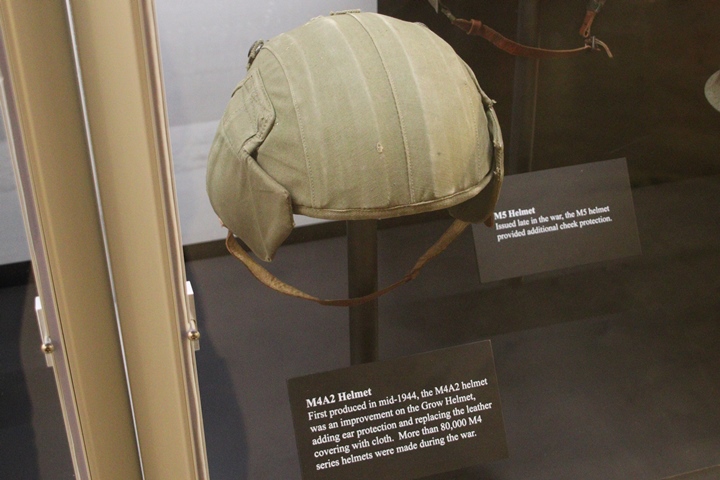
The M4A2 series bomber crew helmets were not produced by the McCord
Radiator & Mfg. Company. However, this helmet is important in the
lineage of protective helmets designed specifically for use by bomber
crews. They were of three piece steel construction with the helmet
and two ear flaps. They were cloth covered to help keep the
wearer warmer than with just a steel helmet. Author's
photo.
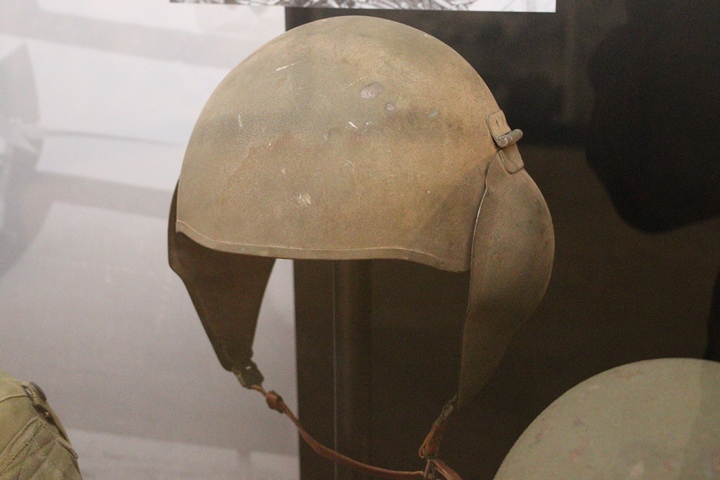
The last of the series of helmets for bomber
crews was the M5 series of helmets. These had longer ear flaps for
more side protection for the wearer. McCord made an unknown number
of these starting in January 1945. Author's
photo.
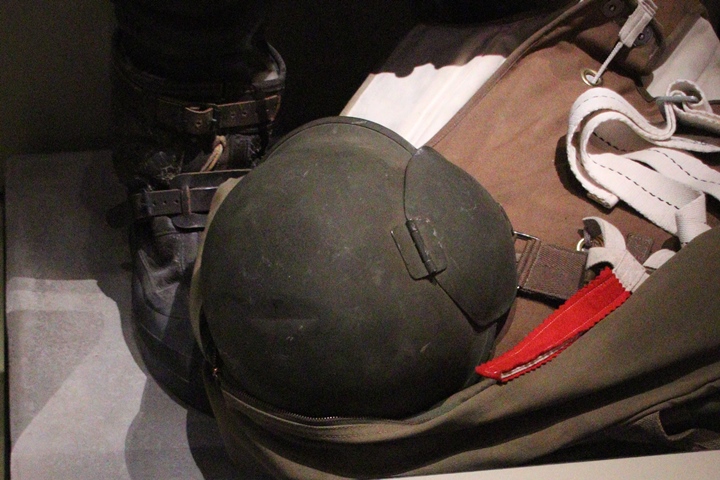
This and the following photo show a
McCord-built M3 helmet that is on display at the National Museum of the
United States Army at Fort Belvoir, VA. Author's
photo.
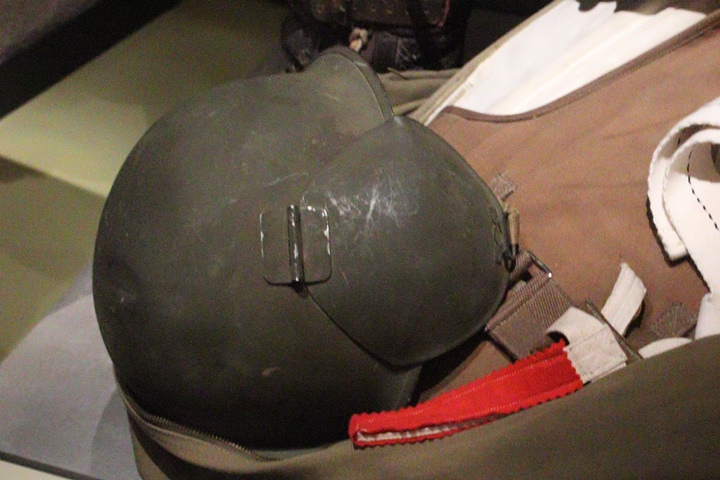
Author's
photo.
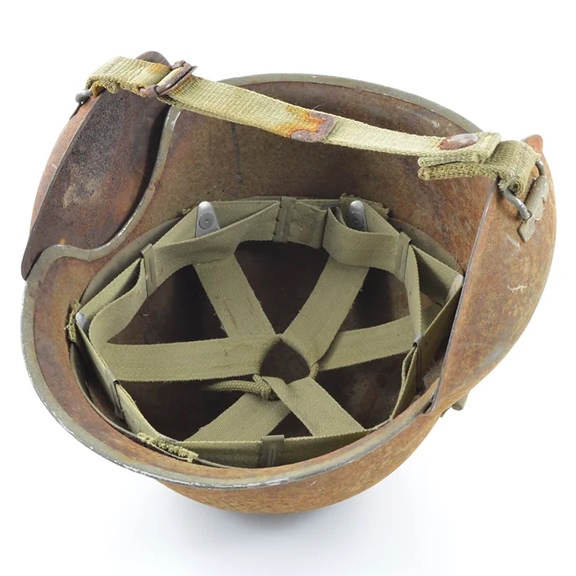
This image of the inside of an M3 flak
helmet shows how the webbing was attached to the interior of the helmet.

The McCord Radiator & Mfg. Company was the
only supplier of 400,000 M2 talker helmets for the U.S. Navy. This
rare example is on display at the Central Ohio Military Museum in
Harrisburg, OH. Author's photo.
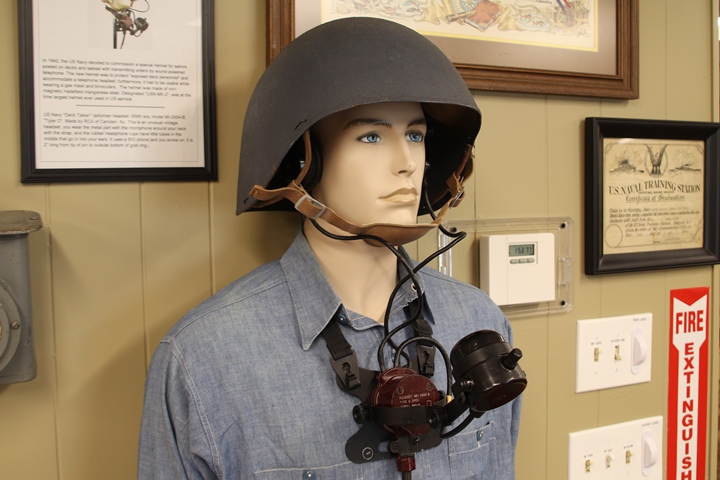
The helmet was large enough so the operator
could wear a set of headphones inside the helmet. Author's photo.
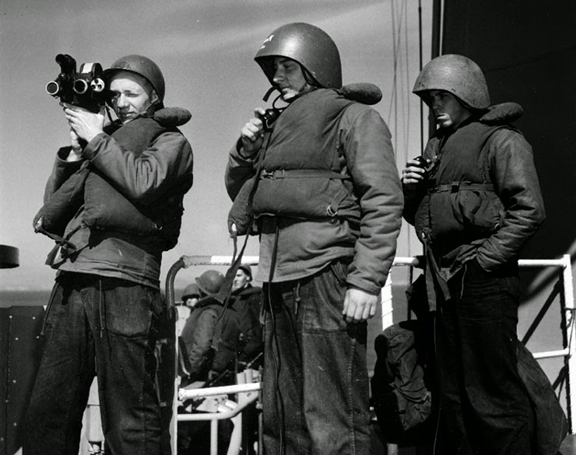
The McCord-produced M2 talker helmet was used for many years after World
War Two by the U.S. Navy. This photo shows two talkers on the USS
Missouri during the Korean War.
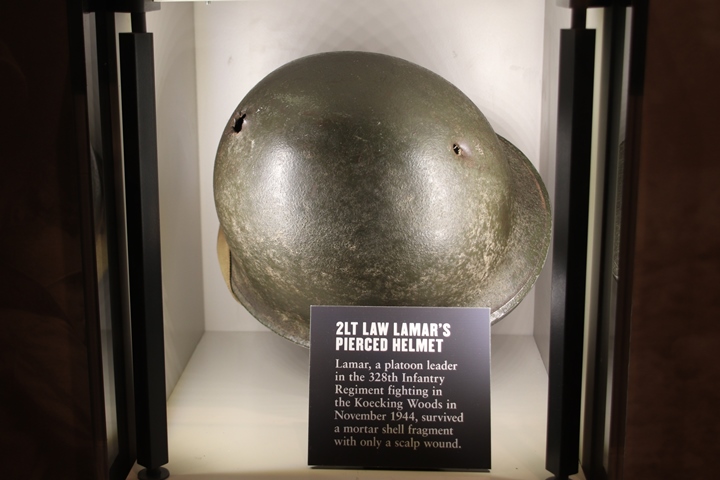
Author's photo from the National Infantry
Museum.
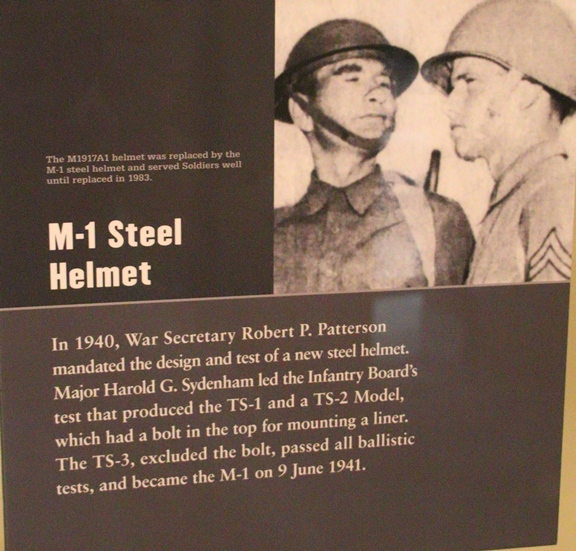
While production of the M1 helmet began at
the McCord Radiator and Mfg. Company, initial development took place at
the former Fort Benning, GA. Author's photo from the National
Infantry Museum.
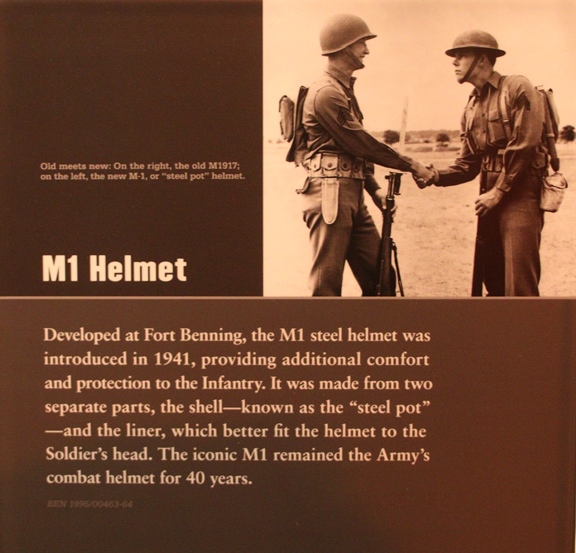
Author's photo from the National Infantry
Museum.
Body Armor:
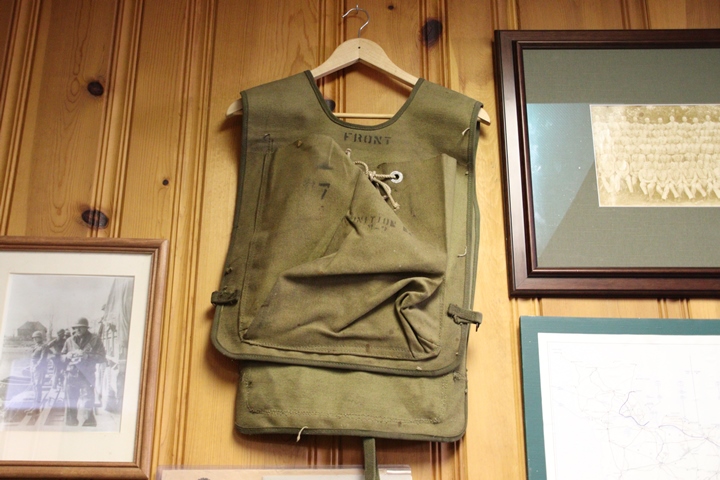
The company also made armored vests for Army
Ordnance during World War Two. The company had two different
contracts for the product that comprised 8.6% of its total contracts.
This body armor on display at the Veterans Memorial Museum in
Germantown, OH, is the type that bomber gunners were issued.
Author's photo.
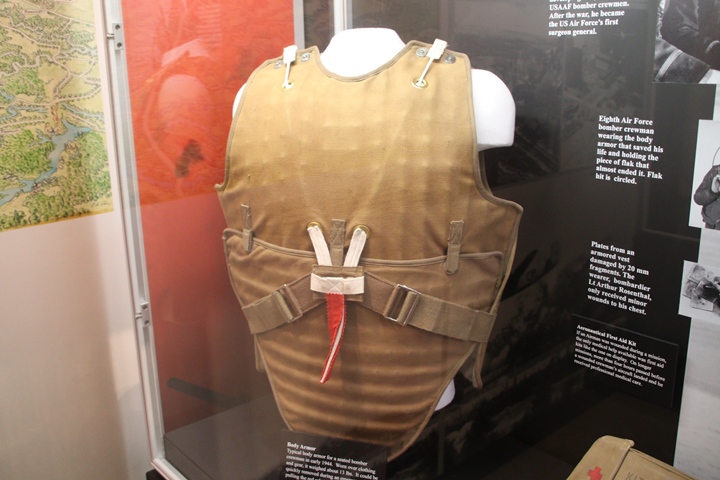
This body armor was issued to bomber crew
members whose functions in the bombers required them to sit. This
body armor is not as bulky as the gunner armor. This example is on
display at the National Museum of the United States Air Force.
Author's photo.
Link Loading Machines: McCord
won its first E Award for the development and production of linking
loading machines for the U.S. Navy. This was the second largest
product group the company manufactured after the M1 series of steel
helmets. It had seven contracts from the U.S. Navy valued at $6,504,000
for this type of product. There are several types of Navy linking
machines shown below. While only one example of a Type M-2
produced by McCord has been found, the company most likely developed and
produced the other types of linking machines shown below.
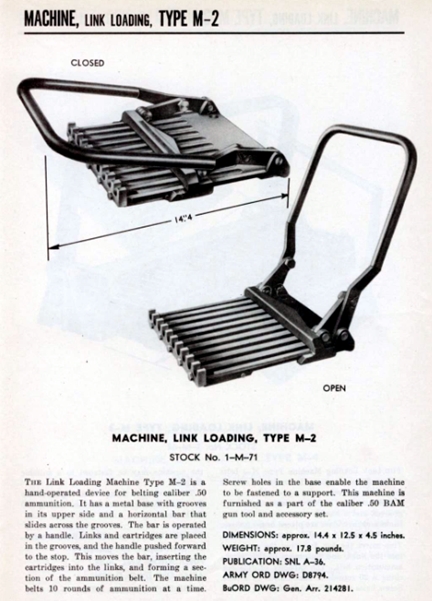
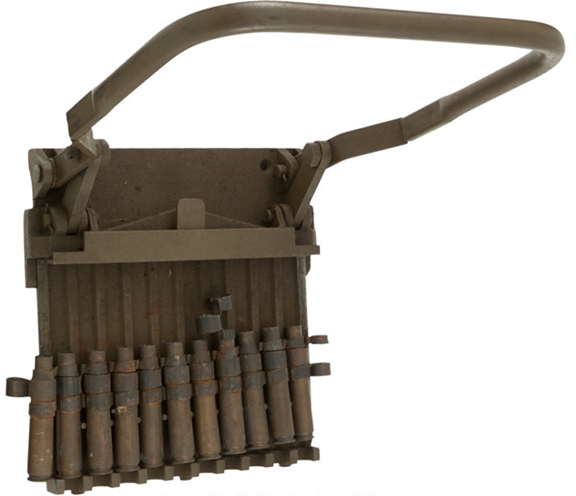
This image shows a McCord Radiator & Mfg.
Company-built .50 caliber hand linking machine.
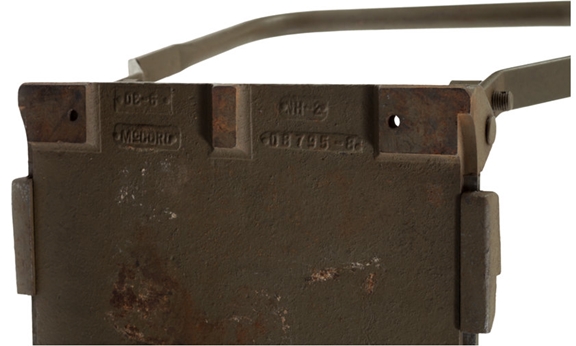
The name McCord is on the bottom of the cast
iron base.
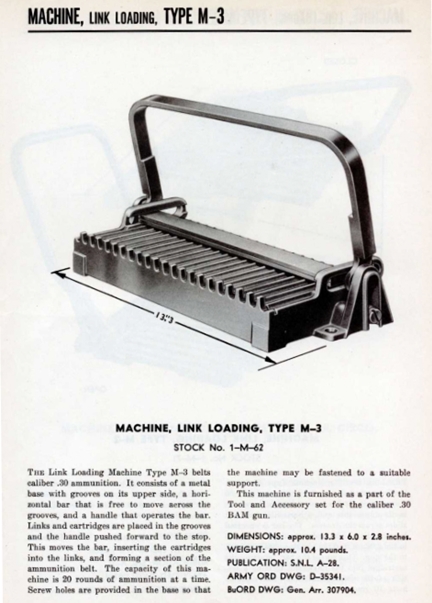
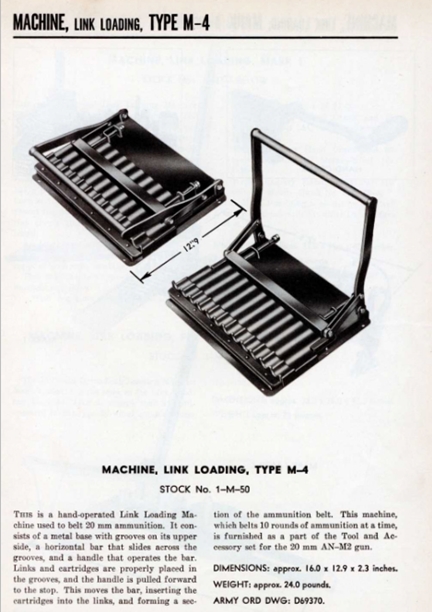
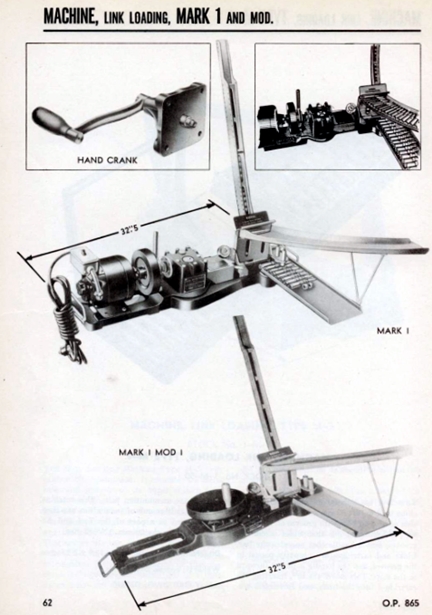
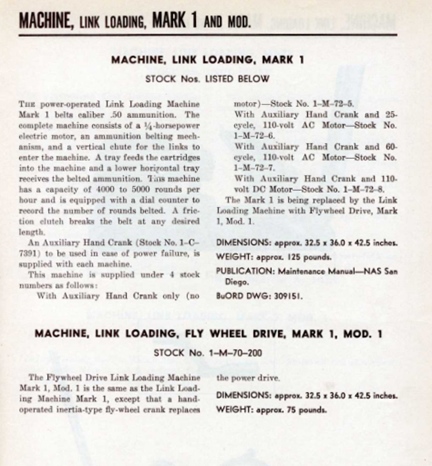
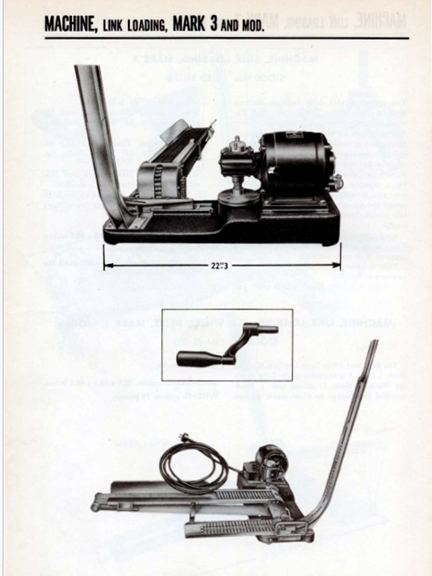
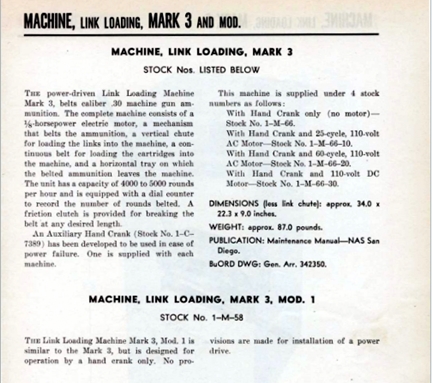
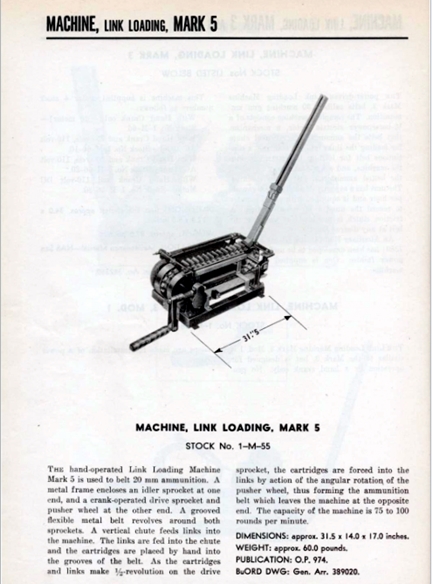
Rockets:
McCord also had five contracts valued at $3,515,000 for rocket motor
production during the later stages of World War Two.
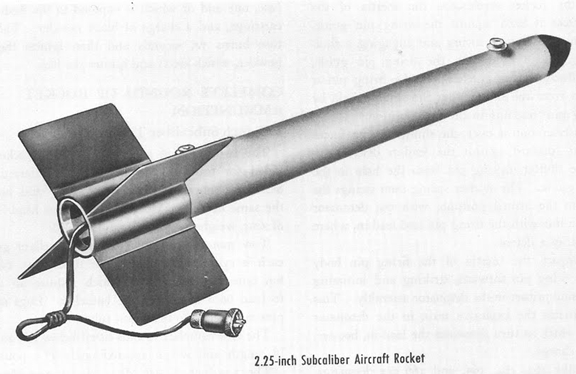
The Mark 2 was a 2.25 inch subcaliber
aircraft practice rocket. It had all of the ballistic
characteristics of the larger 3.5 inch and 5 inch rockets but was more
cost effective for training purposes. McCord had one contract late
in World War Two for $280,000 to produce rocket motor for this practice
device.
Other Country's World War Two Helmets:
The National Infantry Museum at Fort Moore, GA has several displays that
show the helmets the British Commonwealth, German, and Italian soldiers
wore during World War Two. This section gives a comparison of the
different styles of helmets used by these countries during the war.
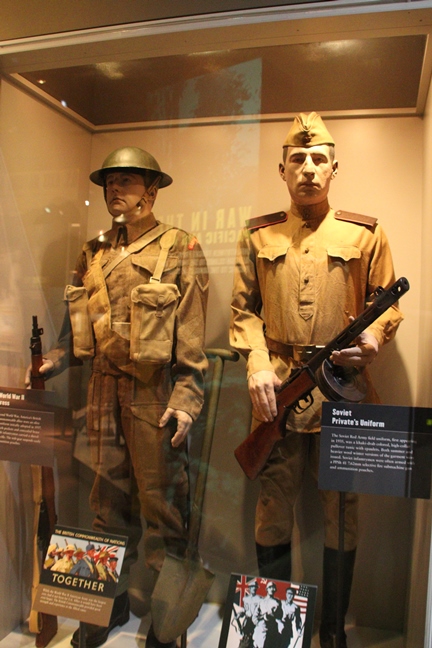
This display shows the Allies' uniforms.
The British Commonwealth soldier is on the left side of the display.
Unfortunately, the Russian soldier in this display is wearing only a
soft garrison type hat on rather than a helmet. Author's photo.
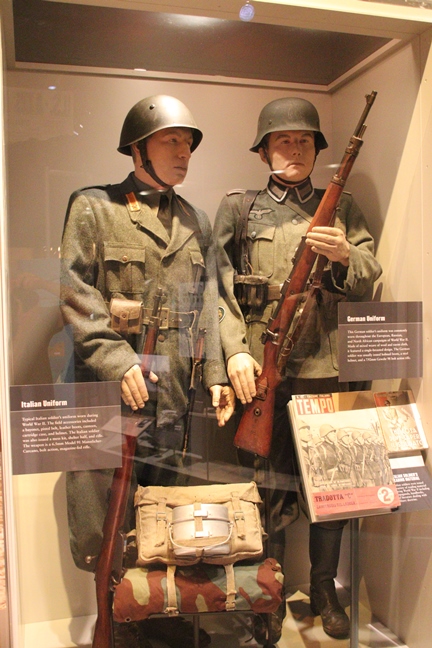
This display shows the Axis soldiers.
Author's photo.
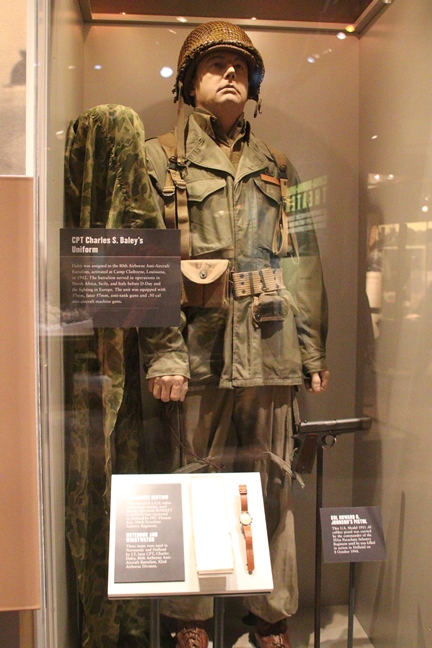
For completeness, I have included a display
of an American soldier. Author's photo.
The McCord Radiator & Mfg. Company's
World War Two Factory: The factory was located at 2587 East
Grand Blvd. in the Milwaukee Junction industrial area of Detroit.
From the Google Maps views shown below, the former plant has been
largely razed.
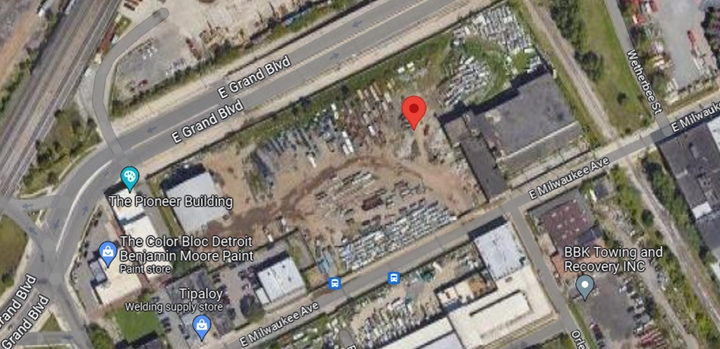
There is still one building standing along E
Milwaukee Avenue and the railroad tracks. This could be the only
remnant of the former McCord Radiator and Mfg. Company factory complex.
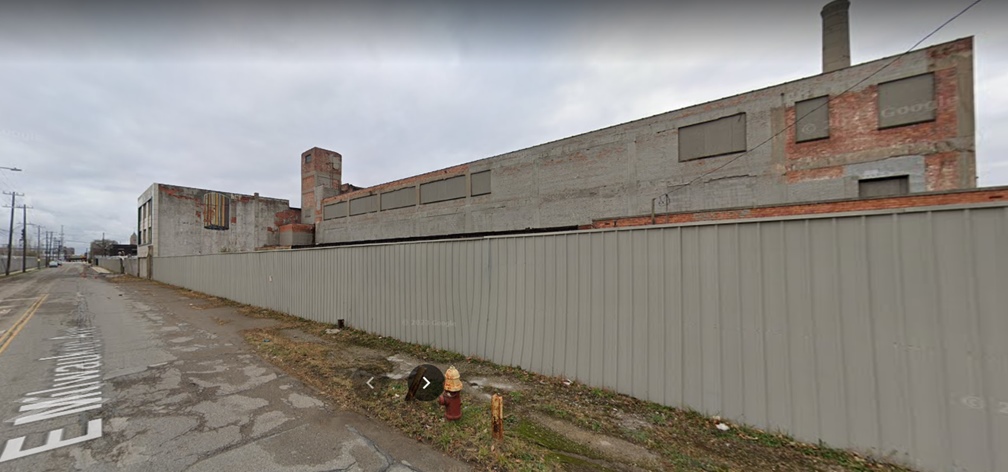
This street view shows the building along
East Milwaukee Avenue.
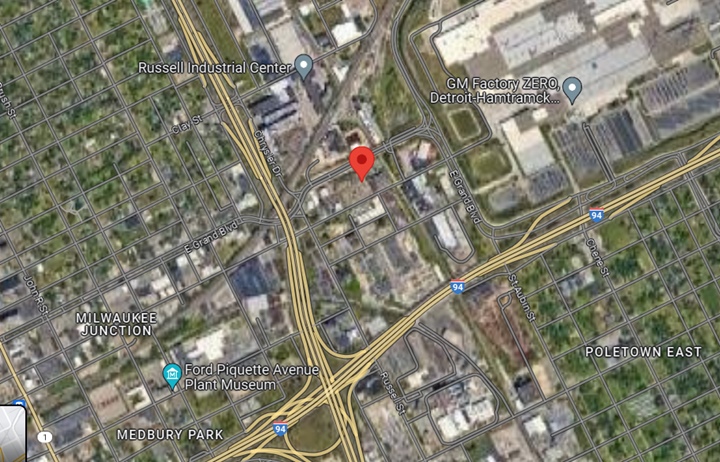
This view shows the plant was north of I-94
and east of I-75, which is not marked in this photo.
|







 |
|





































